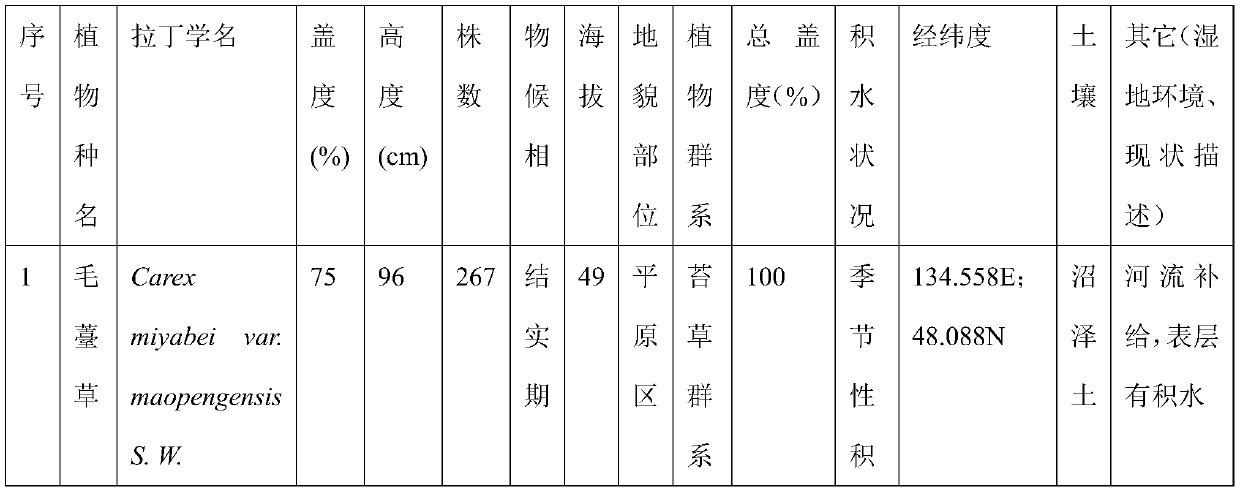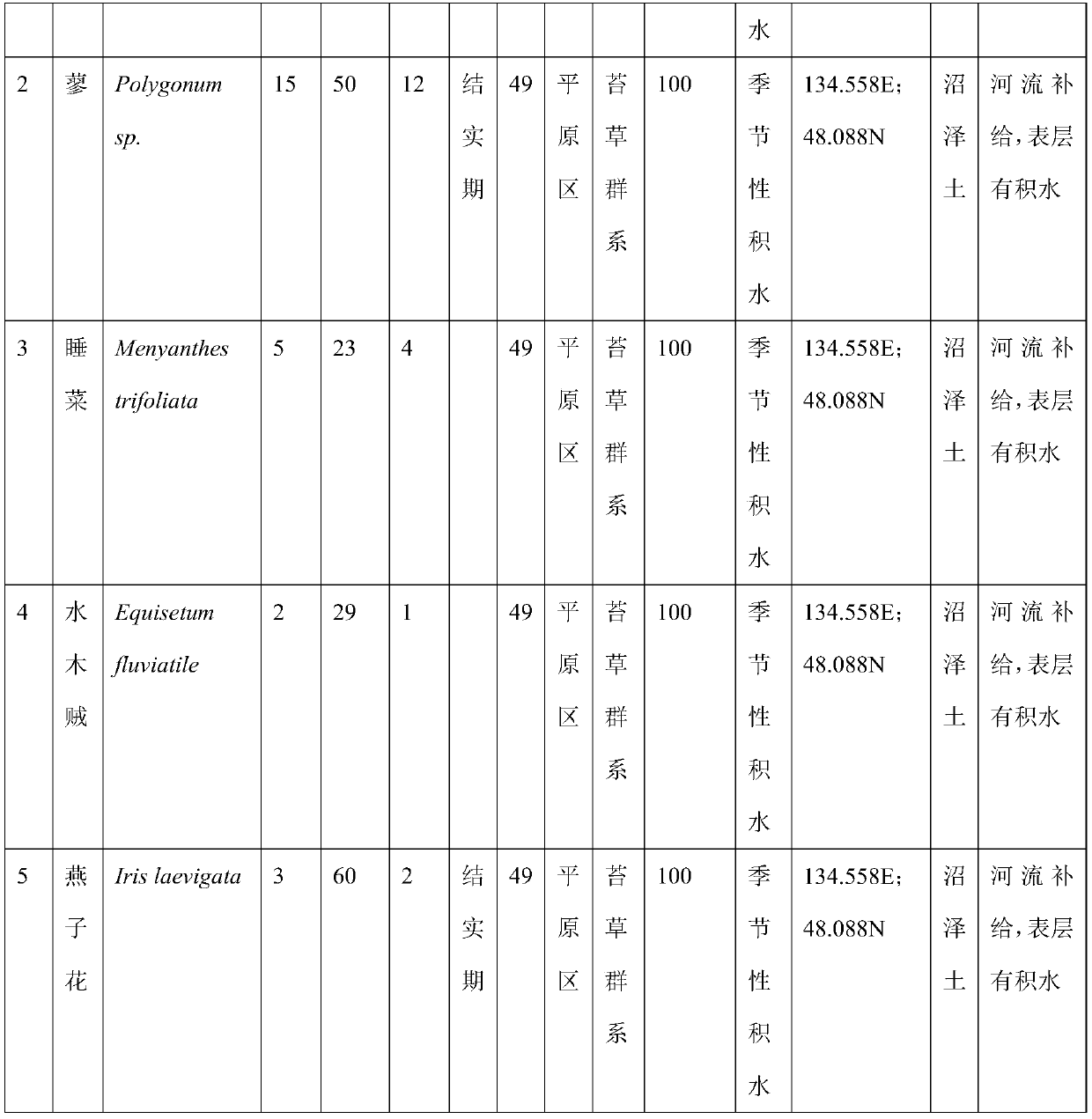Method for judging vegetation recovery of plots as wetlands returned from grain plots in plain areas, vegetation recovery method and vegetation recovery effect evaluating system
A technology for vegetation restoration and wetland plants, applied in the fields of botanical equipment and methods, plant cultivation, complex mathematical operations, etc., can solve the problems of restoration methods and effect evaluation of returning farmland to wetlands without plain areas, and achieve good ecological and environmental benefits, Good material base and living environment, the effect of improving species productivity and biodiversity
- Summary
- Abstract
- Description
- Claims
- Application Information
AI Technical Summary
Problems solved by technology
Method used
Image
Examples
specific Embodiment approach 1
[0030] Specific implementation mode 1: In this implementation mode, the method for judging the vegetation restoration of the converted farmland to wet land in the plain area is as follows:
[0031] 1. Determination of returned farmland and collection of soil samples:
[0032] In May, the soil with a surface area of 25cm × 25cm and a thickness of 10cm was collected at the collection point; the soil seeds were screened by the seed germination method in the greenhouse, and the average value of each species and its seed density in the soil of the returned farmland was obtained;
[0033] 2. Judging the recovery method
[0034] Classify the species, and compare the seed bank of the converted farmland to wetland with the control wetland. When the species and quantity of the wetland species in the converted farmland to wetland are lower than 25% of the control wetland, or the collection of wetland species in the soil provenance of the converted farmland If the ratio of seed density...
specific Embodiment approach 2
[0035] Specific embodiment two: what this embodiment is different from specific embodiment one is the seed germination method in step one:
[0036]In the greenhouse, the seed germination method is used to diagnose the provenance of the soil samples collected in step 1. The greenhouse is kept ventilated, which is consistent with the external temperature and humidity conditions; the specific diagnosis method is: firstly, remove the gravel from the soil samples collected in step 1. , mix evenly, and then spread the uniformly mixed soil samples in the culture pots equipped with vermiculite, divide the culture pots into 3 groups, then place the 3 groups of culture pots in 3 culture tanks respectively, and then cultivate the The pots were wetted, flooded, and wet+flooded alternately; every two weeks, the number of individuals of each plant that germinated in each pot was counted, and after 3 months, the names of the species that germinated in the three groups of pots were counted. a...
specific Embodiment approach 3
[0038] Specific implementation mode three: the difference between this implementation mode and specific implementation mode one or two is that the selection of the control wetland described in step two and the vegetation survey method are as follows:
[0039] Select the natural wetland closest to the converted wetland as the reference wetland; from July to August, conduct the investigation of the surface vegetation of the reference wetland; during the vegetation investigation, 9 quadrats are evenly arranged per hectare of the reference wetland, and the size of each quadrat is 1m×1m, record the name, number of plants, height and coverage of species in each quadrat, and record the water depth, longitude and latitude of each quadrat; after the vegetation survey is completed, count the plant species in the reference wetland Record, and then calculate the importance value of each species in the reference wetland; sort the reference wetland plant species list according to the importa...
PUM
 Login to View More
Login to View More Abstract
Description
Claims
Application Information
 Login to View More
Login to View More - R&D
- Intellectual Property
- Life Sciences
- Materials
- Tech Scout
- Unparalleled Data Quality
- Higher Quality Content
- 60% Fewer Hallucinations
Browse by: Latest US Patents, China's latest patents, Technical Efficacy Thesaurus, Application Domain, Technology Topic, Popular Technical Reports.
© 2025 PatSnap. All rights reserved.Legal|Privacy policy|Modern Slavery Act Transparency Statement|Sitemap|About US| Contact US: help@patsnap.com


